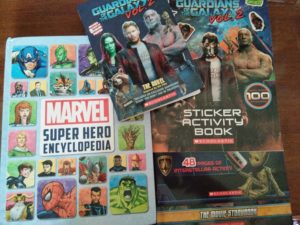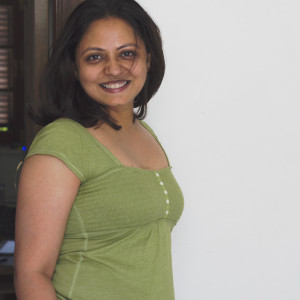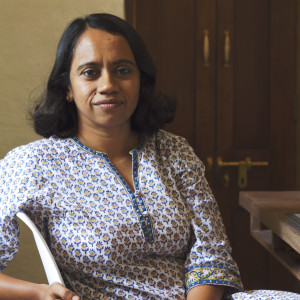Marvel books
Marvel comics were launched in America in 1939. According to Wikipedia:
Martin Goodman, a pulp magazine publisher who had started with a Western pulp in 1933, was expanding into the emerging—and by then already highly popular—new medium of comic books. Launching his new line from his existing company’s offices at 330 West 42nd Street, New York City, he officially held the titles of editor, managing editor, and business manager, with Abraham Goodman officially listed as publisher.
Timely’s first publication, Marvel Comics #1 (cover dated Oct. 1939), included the first appearance of Carl Burgos’ android superhero the Human Torch, and the first appearances of Bill Everett’s anti-hero Namor the Sub-Mariner, among other features. The issue was a great success, with it and a second printing the following month selling, combined, nearly 900,000 copies. While its contents came from an outside packager, Funnies, Inc., Timely had its own staff in place by the following year. The company’s first true editor, writer-artist Joe Simon, teamed with emerging industry’s notable artist Jack Kirby to create one of the first patriotically themed superhero, Captain America, in Captain America Comics #1 (March 1941). It, too, proved a hit, with sales of nearly one million. Goodman formed Timely Comics, Inc., beginning with comics cover-dated April 1941 or Spring 1941.
While no other Timely character would achieve the success of these three characters, some notable heroes—many of which continue to appear in modern-day retcon appearances and flashbacks—include the Whizzer, Miss America, the Destroyer, the original Vision, and the Angel. Timely also published one of humor cartoonist Basil Wolverton’s best-known features, “Powerhouse Pepper”, as well as a line of children’s funny-animal comics featuring popular characters like Super Rabbit and the duo Ziggy Pig and Silly Seal.
Goodman hired his wife’s cousin, Stanley Lieber, as a general office assistant in 1939. When editor Simon left the company in late 1941, Goodman made Lieber—by then writing pseudonymously as “Stan Lee”—interim editor of the comics line, a position Lee kept for decades except for three years during his military service in World War II. Lee wrote extensively for Timely, contributing to a number of different titles.
Goodman’s business strategy involved having his various magazines and comic books published by a number of corporations all operating out of the same office and with the same staff. One of these shell companies through which Timely Comics was published was named Marvel Comics by at least Marvel Mystery Comics #55 (May 1944). As well, some comics’ covers, such as All Surprise Comics #12 (Winter 1946–47), were labeled “A Marvel Magazine” many years before Goodman would formally adopt the name in 1961.
For nearly eight decades Marvel comics have survived despite financial turbulence, been at the cutting edge of testing new publishing models, experimented in mediums and continued telling stories with superheros that have gripped the imaginations of young and old alike. With the booming popularity of films many of the superheroes came alive on the screen — Iron Man, Superman, Fantastic Four, X-Men, Wolverine, Captain America, and Hulk to name a few. On August 31, 2009, The Walt Disney Company announced a deal to acquire Marvel Comics’ parent corporation, Marvel Entertainment, for $4 billion. As of the start of September 2015, films based on Marvel’s properties represent the highest-grossing U.S. franchise, having grossed over $7.7 billion as part of a worldwide gross of over $18 billion.
The last decade has seen the explosion of digital and print mediums and recently of the two experiences coming together. It helps in creating an immersion which is absolute for die-hard fans of the Marvel superheroes. Scholastic, a publishing firm specialising in children’s literature predating the formation of Marvel Comics, has been over the years releasing a range of print products to meet this demand. Take for instance the recently released film Guardians of the Galaxy 2 ( April 2017) where popular actors have done voiceovers for the characters. ( Vin Diesel is the voice for Baby Groot!) Scholastic to coincide with the film published a range of books around the Guardians of Galaxy characters. These include “the movie storybook”, a novel “inspired by the film”, colouring and activity book and a sticker activity book. What is absolutely incredible is how smoothly the publicity team has created a range of successful publishing collateral targetting different age groups of readers. Children are immediately drawn to the books and are kept happily entertained for hours. Along with this a revised hardback edition of Marvel Super Hero Encyclopedia was released. Even though it is priced slightly on the higher side for the local Indian market it has proved to be a bestseller, notching up healthy sales. ( This, despite parents and schools, advising children not to buy such “useless” books!) What is a particularly charming aspect of these stories is that though the super heros are gender-defined and their physical forms are some illustrator’s fantasy of the ideal body shape, the characters appeal is gender neutral. Thankfully, irrespective of the gender of the reader, all children ( and adults) gravitate towards the books. Here is a link posted on Facebook by Seale Ballenger, Publicity Director, Disney Publishing Worldwide ( 29 June 2014) of the legendary Stan Lee speaking about the importance of writing stories for younger readers:
Stan Lee talking about the importance of writing for young readers at ALA 2014
Posted by Seale Ballenger on Saturday, June 28, 2014
Frankly the fascination of these Marvel books is obvious and worth recommending. They keep children happily engaged and away from electronic babysitting while opening up an imaginative world away from their daily routines. It is like going down a worm hole on an adventure with bizarre characters.
27 June 2017




